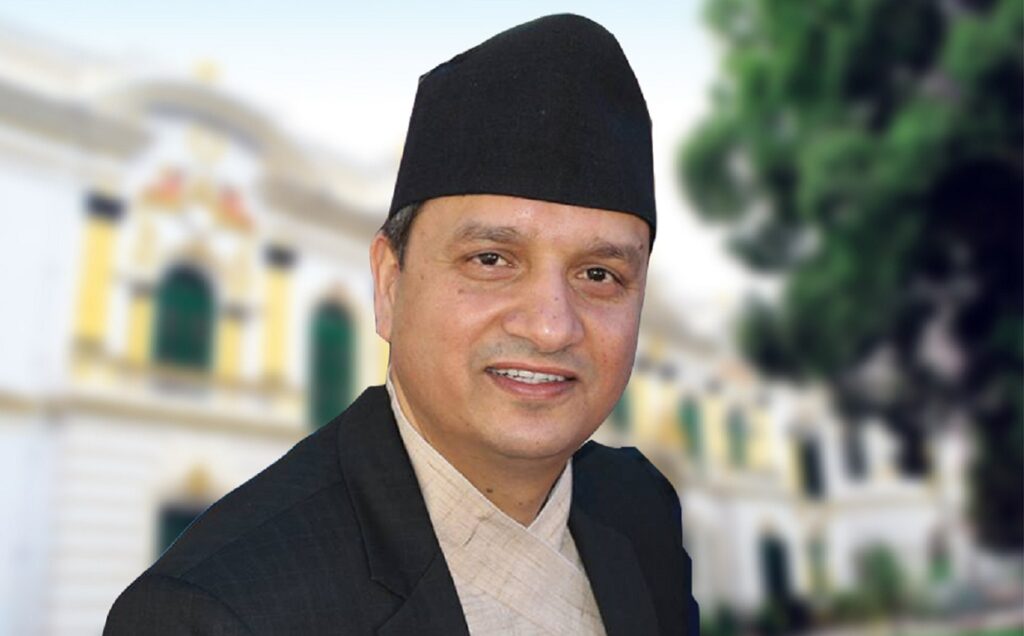Kathmandu, February 10
Nepal Rastra Bank has been formulating monetary policy every year. Although monetary policy is formulated once for a fiscal year, monetary policy is reviewed every three months. According to the NRB, monetary policy is formulated to help maintain economic stability. Under the Banking Education Campaign, the spokesperson of the Central Bank, Dr. Gunakar Bhatt has said below-mentioned points:
What is monetary policy?
The policy formulated by the central bank of the country to support the expansion of economic activities while maintaining macroeconomic stability is the Monetary policy. Monetary policy aims to contribute to economic growth and job creation by maintaining economic stability through money supply, credit, and interest rate management.
The government’s policy related to revenue, expenditure, and debt is called finance policy. Which we call fiscal policy. Another is the monetary policy formulated by the central bank. Monetary policy is the policy on debt and interest rate management. How much loan to extend? What is the limit of the interest rate? And how monetary policy aims to control
inflation.
What are the objectives of the monetary policy that is made public every year?
The main emphasis of monetary policy is economic stability and it manages money supply and interest rates. Basically, monetary policy has three objectives. One is to control inflation. Which we also call price stability. The monetary policy requires that the value of the commodity in the market does not increase much. Monetary policy is supposed not to burden the people with inflation. NRB’s own efforts alone are not enough.
Inflation also has two sides. One demand affects it and another supply. If the production of
paddy, vegetables, and milk increases, inflation will not increase and inflation will remain under control. The production side remained weak. If the supply system could not be strengthened, problems would arise. Now, what the NRB will do through monetary policy is to make the demand systematic. The central bank manages to ensure that inflation rises to a very high level due to high demand and lack of supply as per the demand.
However, in the context of Nepal, in order to maintain price stability or to control inflation, NRB should provide easy access to credit which will help the supply side. Emphasis is placed on reducing the production cost of the commodity.
Another aspect of monetary policy is to maintain external stability. Care is also taken to ensure that the balance of payments deficit does not increase, that the trade deficit does not increase or that there is unnecessary pressure on foreign exchange. The value of our currency is also considered to be lower than that of other currencies. The third aspect of monetary policy is the stability of the financial sector.
Issues such as the quality of credit should not be reduced, bad loans should not be increased and interest rates should not go above or below the required level are related to financial sector stability. This is why monetary policy is related to debt and interest rate management. Its main purpose in our context is to focus on price stability, external sector, and financial sector stability.
How is the monetary policy formulated?
When it comes to formulating monetary policy, we have built a systematic system over the
years. Many years ago, there was no separate monetary policy in Nepal. After the enactment of the Nepal Rastra Bank Act, 2058 BS, it was decided that monetary policy should be made public every year.
As per the provisions of the Act, we have been continuously making public the monetary policy every year since 2059 BS. In the early years, monetary policy was formulated only annually. After a few years, monetary policy was formulated on a half-yearly basis. At present, monetary policy is reviewed on a quarterly basis. In formulating monetary policy, we have been taking suggestions from the general stakeholders.
Internally, there is a committee under the coordination of the Executive Director of the
Research Department to coordinate the various departments concerned in the NRB. The
management committee chaired by the governor discusses monetary policy.
After that, the monetary policy will be made public by discussing in the Board of Directors, the highest body of NRB. NRB has directed the banks and financial institutions for its
implementation.
There is also a quarterly review of monetary policy. Why a quarterly review?
It has been only five years since the quarterly review of monetary policy. Earlier, the economy did not change very quickly. Now the economy is changing very fast. What is the trend of GDP, inflation, import-export or interest rate? We are looking at what the market expects.
Sometimes it is possible to make the market a little easier or sometimes it is possible to control the market. Demand for this specialty has grown significantly as a result of recent corporate scandals. We are also serious about preventing inflation. Therefore, we have been reviewing the monetary policy on a quarterly basis and making necessary adjustments. It also plays a role in making our communication system effective.
By Karuna Thapa




